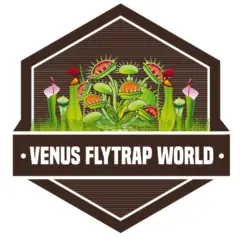Venus fly traps extract key nutrients from insects they capture.
If you are growing Venus fly traps indoors, it is recommended to ensure your plant is consuming bugs.
Venus fly traps growing indoors and outdoors will both consume insects. However, indoor Venus fly traps most often struggle to capture prey.
You can feed Venus fly traps with insects, spiders, and even fertilizer. Here are some of the best alternative for food options:
You can feed your plant live of dead insects, such as:
- Ants
- Flies
- Gnats
- Fruit flies
- Beetles
- Spiders
Freeze dried insects are a great alternative you can buy at the pet store. This bugs are dehydrated. To rehydrate them, just add a few drops of distilled water and let the insect absorb it for 3-5 min, before feeding to your plant.
- Crickets (https://amzn.to/34QEnKv)
- Mealworms (https://amzn.to/3B9V4i0)
- Bloodworms
Another options is to use foliar fertilizer as feed. This is a more advanced method. You can use diluted Maxsea fertilizer to feed you plant by dissolving 1/4 of a teaspoon of Maxsea fertilizer in a gallon of distilled water. Then you can add a few drops inside the traps.
It is also key that you learn what you should never feed your plant!
Never feed human food to your Venus fly traps. Especially when growing them indoors. Meat, sausage, chicken, candy, fruit, cheese, and really any food that is not insects or spiders is harmful to Venus fly traps.
Also, you should never feed any other animal besides insects to your plant.
Venus flytraps can’t consume such complex foods. Their leafs turn black and rot with any of these bad alternatives. In some cases it might produce odor or attract pests. So… avoid at all costs 😉
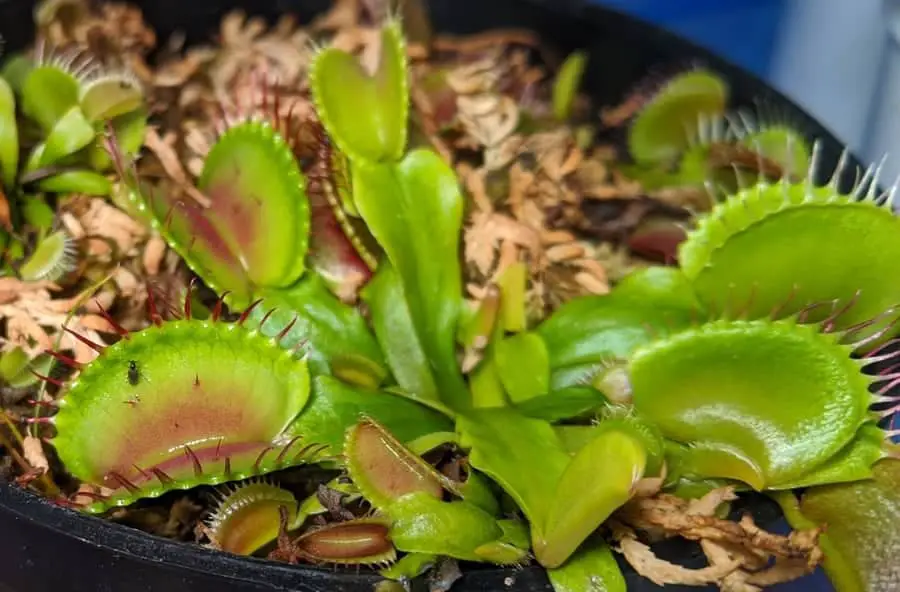
Best Food for Indoor Venus Fly Trap
1.- Nothing
Venus flytraps benefit a lot from consuming bugs, but they do not need them to survive.
It is perfectly fine to never feed your plant. It can capture bugs on its own or never do it and still be healthy.
However, I personally recommend feeding your plant when you grow them indoors.
Conditions indoors are not usually optimal, as the plants do not have access to long hours of sunlight, constant airflow and seasonal changes.
Feeding your plant can help them grow, propagate, and develop prettier leaves and brighter colors 🙂
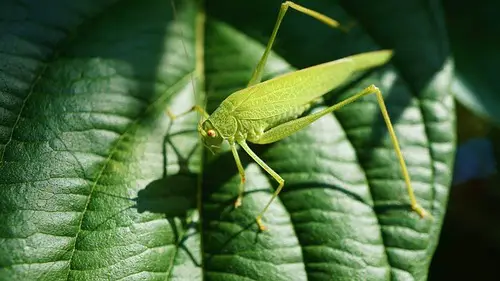
2.- Live Insects
Venus fly traps are effective at capturing small bugs, if they have the opportunity indoors they will feed themselves. In that, case you do not need to worry about anything.
You can also capture or buy (in a pet store) live bug for feeding. Almost any insect will do.
Here are some great options:
- Flies
- Cricket
- Mealworms
- Bloodworms
- Fruit flies
- Gnats
- Ants
- Rollie pollies
- Beetles
- Spiders
- Ladybugs
- Grasshoppers
- Mosquitos
Choose an insect than is the right size for your plant. For a Venus fly trap select a bug that is a max 1/3 or the size of a trap.
I suggest avoiding larger insects that might produce odor (roaches, large grasshoppers, etc).
Most of them you can forage in a garden or a park.
Crickets, mealworms, fruit flies, and bloodworms are available in pet stores and are extremely nutritious.
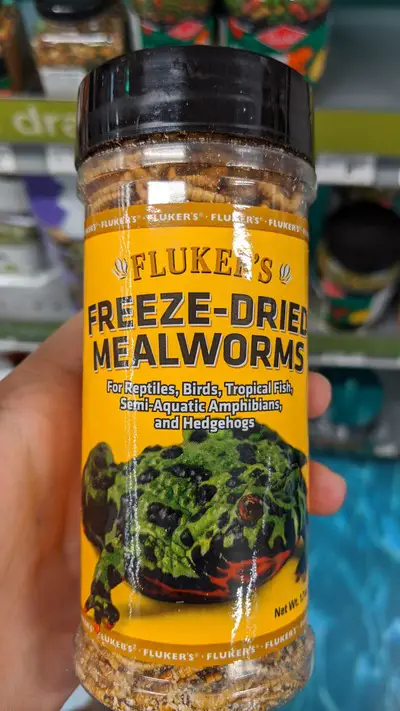
3.- Dead and Freeze-dried Bugs
Found a dead bug outside, you can totally use it for your carnivorous plants. Use the whole insects or a piece of an insects to feed your plant.
You can also buy dead insects that come freeze-dried from per stores or grocery stores. You can find freeze-dried bloodworms, mealworms, and crickets for an inexpensive price.
However, you must keep in mind that feeding non live bugs to your plant takes an extra effort, as you must trick the plant into believing it caught live prey. The full instructions for this are in the last sections.
Freeze-dried insects are dehydrated. To rehydrate them, just add a few drops of distilled water and let the insect absorb it for 3-5 min. Then, pat it dry before feeding to your plant. Make sure to get rid of the water as the excess can cause black leaves.
A whole container of freeze-dried bugs is usually less than $15 and will last you ages. Here are two links to some feed I have used; both are incredibly nutritious:
- Dried crickets to feed carnivorous plants: https://amzn.to/34QEnKv
- Freeze-dried mealworms for carnivorous plants: https://amzn.to/3B9V4i0
4.- Diluted Foliar Fertilizer
Fertilizing or feeding carnivorous plants with diluted fertilizer is a common practice among hobbyists. However, doing it incorrectly can end up killing the plants.
Maxsea 16-16-16 plant food fertilizer is a well known option. The fertilizer comes in powder and needs to be diluted in distilled water.
To feed you plant you dissolve 1/4 of a teaspoon of Maxsea fertilizer in a gallon of distilled water.
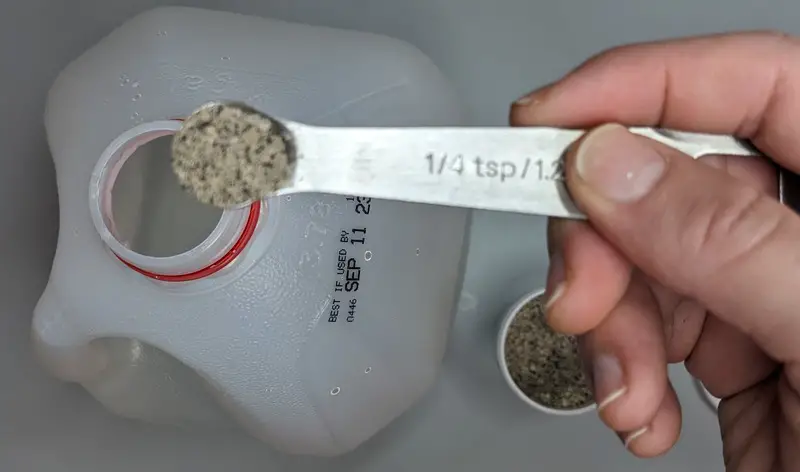
Mix well before feeding your plants.
Drop 1-2 drops of the solution inside the traps of a Venus fly trap.
A couple of drops is enough to feed the whole plant.
The goal is simple. Add the fertilizer in the leaves, never in the soil. Any fertilizer in the soil brings nutrients to the roots and poisons the plant.
Using Maxsea is very affordable and effective for carnivorous plants. However, it can be challenging to place the fertilizer without dropping it in the soil.
Besides feeding there are many other care considerations. Here is a care guide to grow Venus fly traps at home.
How to Feed Venus Fly Traps
Feeding Venus fly traps is not too difficult. I go through this process every few weeks and have perfected over the years. Let’s start with the basics:
Frequency: Feeding your plant once every 2-6 weeks is enough to provide key elements and nutrients. If your plant is still consuming a bug, wait until it is done to feed again.
Volume: You only need to feed a single insects to your plant in every feeding. Feeding more insects at a time can cause overfeeding and end ip harming the plant.
Best times to feed: You can feed your plant, almost year round. During the spring and summer season is best to keep up consistent feeding. However, I do recommend stopping any type of manual feeding during dormancy.
Size of the food: When feeding your plant, measure the size of the food. The insect you choose must be no larger than 1/3 of the size of the trap you intent to feed. The trap should be able to enclose the bug completely.
When using fertilizer, the size of the drops is not critical, but you must ensure all fertilizer stays in the leaves.
Here are the instructions to feeding your plant and one of my videos for a visual guide:
Feeding Instructions: Live Insects
Feeding live insects to a Venus fly trap is very easy.
Place the insects inside the trap and make sure you touch the trigger hairs inside the leaf (this are the thin filaments inside the leaf, there are three in each side of the trap). Touch any of them twice within a few seconds and the trap will close.
You have to be fast as dropping the insects and activating the trap before the bug scapes.
The plant will close if the trigger hairs receive the signal, trap the insect and start producing enzymes to consume the food.
Venus fly trap will take about 7 to 21 days to consume a small bug and even longer for large insects.
Feeding Instructions: Dead or Freeze-dried Bugs
Using dead insects to feed your plants, does not require quick reflexes, you can just place them in a leaf and then touch the trigger hairs. The plant will close, but it won’t start digesting the bug.
Venus fly traps are very careful at selecting prey, they only consume live insects.
For this reason, you must trick the plant into believing it caught a live insect.
You will need to press both sides of the trap together. Do a tapping motion several times, approximately 20-60 times. With the taps, the trigger hairs will sense movement and the plant sets its digestive motions and starts producing fluids.
For the complete instructions on how to feed Venus flytrap, check this other article.
Besides feeding your plant, you can do more to encourage fast growth. Here are the tips to grow big venus fly traps.
